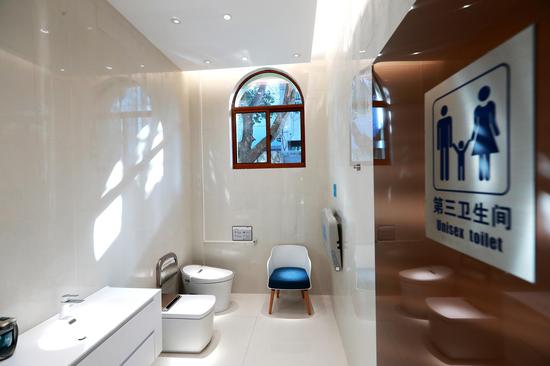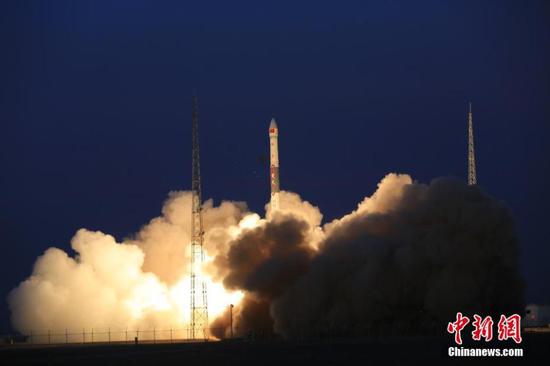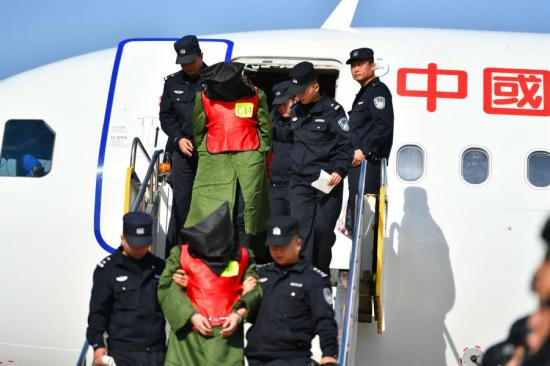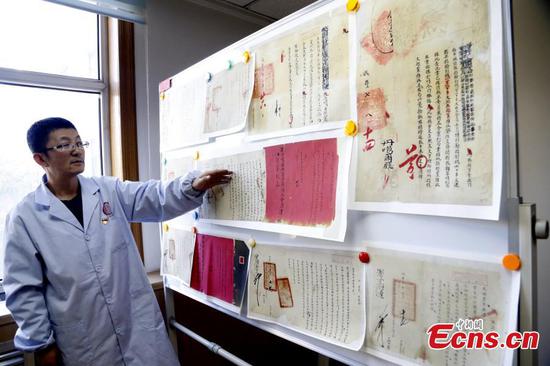
A tax official introduces tax services to a customer at the administrative service center in Quanzhou, Fujian Province, June 20, 2019. (Photo/Xinhua)
China's 2 trillion yuan ($281 billion) tax and fee cut plan continued to pull down government income in October, pushing officials to expand non-tax revenue and maintain stable fiscal spending to support economic growth, according to the Ministry of Finance.
The central and local governments' budgeted income rose 3.8 percent from a year earlier to 16.7 trillion yuan in the first 10 months of this year, slower than the 7.4 percent growth rate in the January-to-October period in 2018, the ministry reported on Tuesday.
By comparison, fiscal spending reached a total of 19.06 trillion yuan from January to October, up by 8.7 percent from a year earlier, and 1.1 percentage points higher than the growth rate in the same period in 2018, the official data indicated.
To offset economic slowdown risks and maintain stable spending, the central government has increased the budgeted deficit, and increased the usage of a special fund that was set up to stabilize the budget, according to a document from the Ministry of Finance.
Local governments, which collected 8.7 trillion yuan in the first 10 months, have taken measures to increase nontax income including selling some assets, the document said.
Several provincial-level governments, including Hubei and Jilin, have cut the budgeted fiscal expenditure, mainly because of the reduction of tax income, it showed.
Finance Minister Liu Kun said at a news conference in September that China will be able to achieve its annual fiscal budget goals this year, and the total tax and fee reduction may exceed 2 trillion yuan.
Experts said that the tax and fee cuts may continue in 2020, maintaining a measure to increase companies' profit and encourage their investment, but not as strong as 2 trillion yuan, given the financial difficulties the government is facing.
This year, the targeted deficit-to-GDP ratio was set at 2.6 percent. "It is not necessary to largely adjust the fiscal deficit ratio in 2020, and the benefits of the tax cut will gradually appear," said Tang Jiqiang, a professor at Southwestern University of Finance and Economics.
In October, China's tax income dropped around 4 percent year-on-year. It was the fifth consecutive month that recorded a negative rate compared with a year ago, the Ministry of Finance said. Among the different taxes, individual income tax declined the most, at a rate of 28.6 percent in October from a year earlier. The growth rate of the value-added tax was 3.2 percent, slower than 10.3 percent in October 2018.
However, China's fiscal position would remain significantly stronger than those of most developed economies, said Yu Yongding, a senior economist with the Chinese Academy of Social Sciences.
China has the space to implement a policy package to tackle the risks of a continued growth slowdown, especially on the fiscal front, while the side effects and limits of such a package should also be taken into account, said Yu.
To further spur the economy, China has eased the restrictions on infrastructure construction financing, allowing many fixed-asset investment projects to lower the capital ratio. The authorities also permitted local governments to use part of special-purpose bonds as project capital to support major national infrastructure projects.


















































